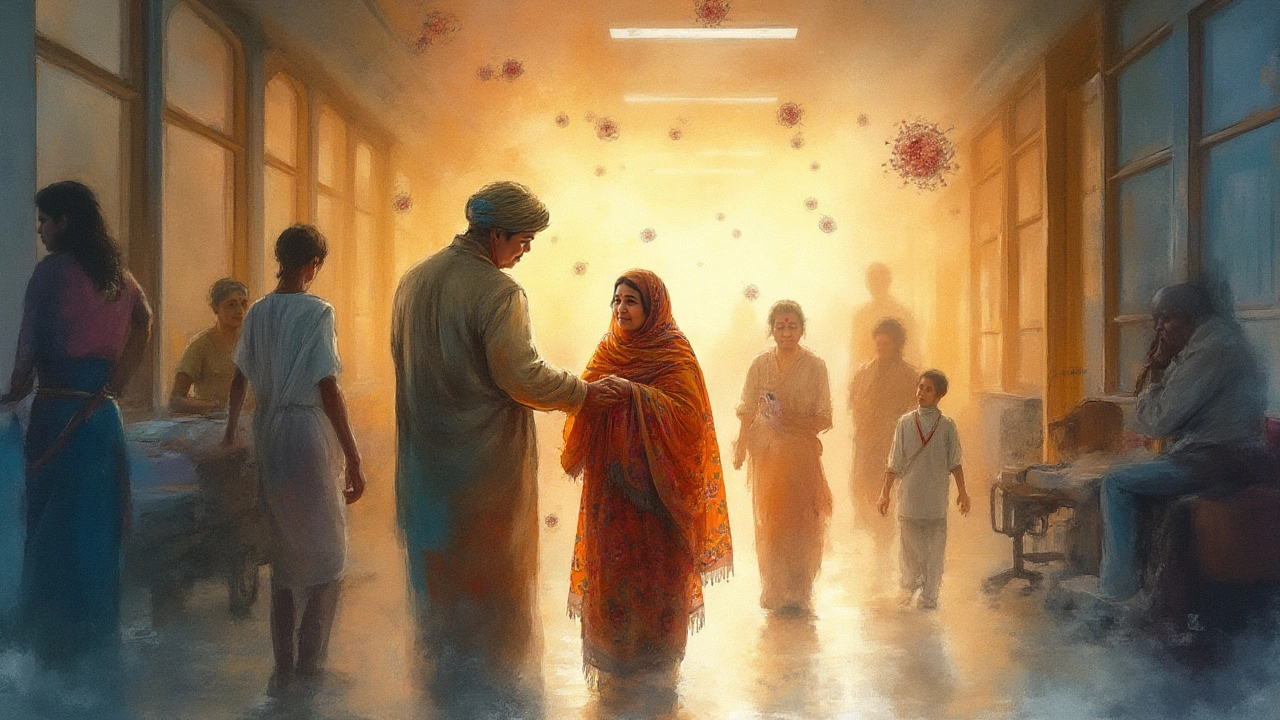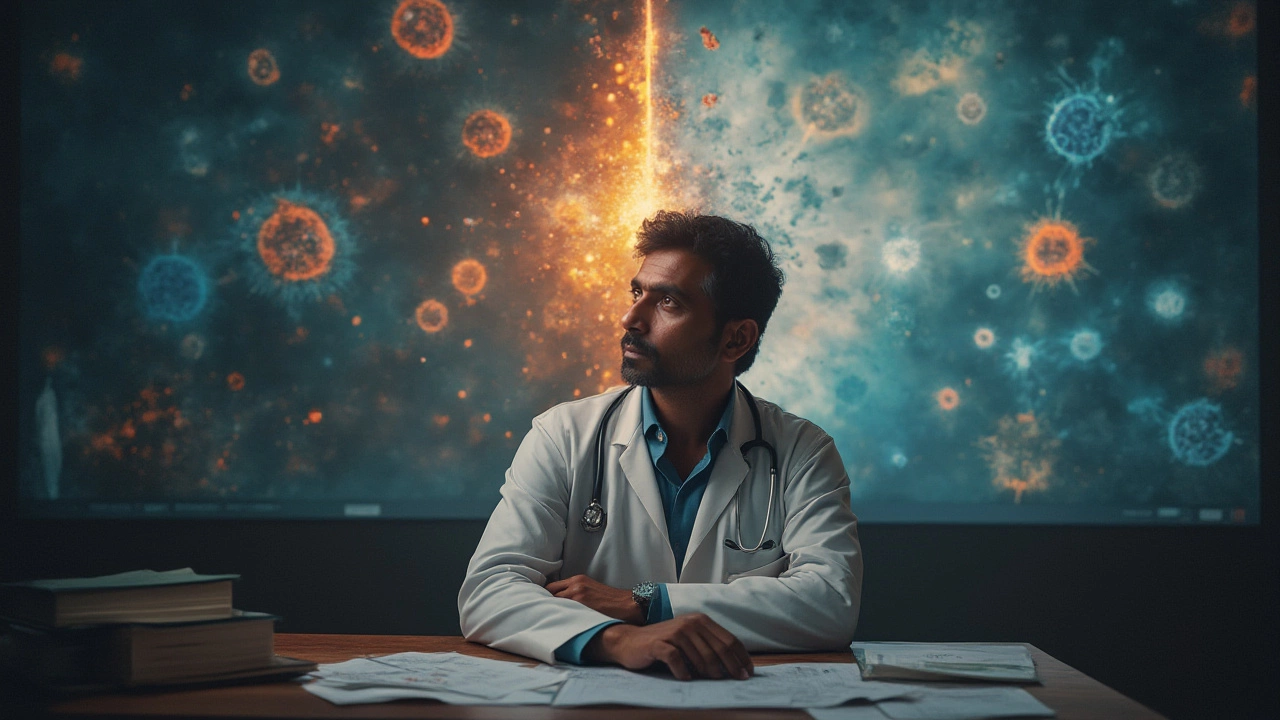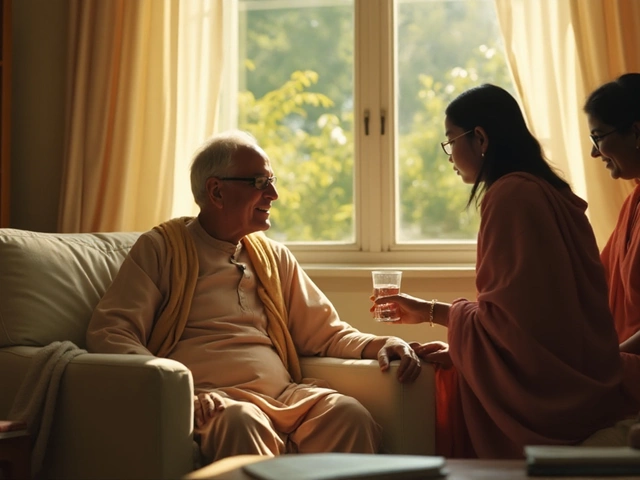If you’re reading this, you’ve probably heard stories about someone diagnosed with cancer, fighting it for years, and sometimes, tragically, losing the battle. The word "incurable" hits hard. But what does it actually mean, especially when it comes to cancer? Can any cancer be called truly "not curable"—no matter what doctors throw at it? Strangely, the answer isn’t just about biology or medicine. It’s also about timing, how early it's found, breakthroughs in treatment, and sometimes, pure luck.
Cancer is not just one disease—it’s hundreds, all with their own rules, challenges, quirks, and outcomes. We tend to lump them under one scary label, but telling pancreatic cancer apart from, say, a slow-moving skin cancer is like comparing a sprint to a marathon. Over the years, new treatments have changed the story for some types. Back in the 1970s, a leukemia diagnosis for a child would’ve meant a heartbreakingly short life. Now? Many live to grow up, graduate, and have their own kids. Still, some forms of cancer stubbornly refuse to cooperate with even the smartest drugs and surgeries.
The Hardest Cancers to Beat: What Makes Them Uncurable?
"Uncurable cancer." You may have heard this phrase tossed around by doctors. But what defines uncurable? It's cancers where medical science, as of now, doesn't have a way to completely rid the body of the disease—even if the patient responds somewhat to treatment. Some types grow so quickly or lurk so quietly in the body that once they’re noticed, it’s too late for a cure. Others resist even the latest, most advanced treatments. Sometimes, the problem isn’t just the cancer itself, but where it grows or how it spreads. When a tumor is wrapped around a vital organ or already scattered to distant parts of the body, cutting it out or wiping it away with drugs isn’t in the cards anymore.
Among the biggest "troublemakers" are pancreatic cancer, glioblastoma (an aggressive brain tumor), metastatic melanoma, stage IV lung cancer, and certain rare blood cancers. For many people diagnosed with these, doctors talk about "managing the cancer" rather than curing it. In the U.S., the five-year survival rate for pancreatic cancer hovers around 13%. For glioblastoma, it’s barely 6%. Compare that to some slow-growing thyroid cancers (where five-year survival can be 98% or more) and you see the difference.
Take pancreatic cancer. It often shows no symptoms until it’s spread too far. Only about 10% of these cancers are found early enough to attempt surgery, and even then, recurrence rates are high. The actress Alex Trebek made headlines by battling stage IV pancreatic cancer for nearly two years—an unusually long run—showing that no two journeys are the same, but the odds are tough. Or consider glioblastoma, the cancer that took John McCain and Beau Biden. It grows tentacles into healthy brain tissue, making surgical removal close to impossible. Even with surgery, radiation, and chemotherapy, these cells almost always grow back.
Here’s a quick look at the survival odds for some of these hard-to-treat cancers, according to U.S. National Cancer Institute data from 2024:
| Cancer Type | 5-Year Survival Rate |
|---|---|
| Pancreatic | 13% |
| Glioblastoma (Brain) | 6% |
| Stage IV Lung | 7% |
| Liver | 19% |
| Esophageal | 21% |
| Metastatic Melanoma | 32% |
Notice how these types frequently have survival odds under 1 in 5. Most other cancers, especially when caught early, are far more treatable. But catch these late or when they’ve already spread? The conversation often turns to “control” rather than “cure.”

The Science: Why Do Some Cancers Resist a Cure?
So what sets these tough cancers apart? Why do some wave the white flag under treatment, while others dig in their heels? The answer lies in their biology, location, and sneaky behavior.
- Advanced Spread (Metastasis): Once cancer cells travel beyond their starting point, they become much harder to kill. Imagine trying to hunt down hundreds of tiny pests hiding throughout a house, instead of just dealing with one nest.
- Location, Location, Location: The brain is especially tricky. Treatments have to be harsh enough to kill the cancer, but gentle enough not to wipe out healthy brain cells. The same goes for cancers lodged deep in the liver or pancreas.
- Hidden Symptoms: Some cancers lay low, causing barely any symptoms until they’re huge or have spread. Pancreatic, kidney, and ovarian cancers are masters of this.
- Genetics: Some types have mutations that help them dodge chemotherapy or radiation. For example, certain lung cancers with the EGFR or ALK mutations often require highly specialized drugs that only buy time, not a cure.
- Treatment Resistance: Even if initial treatments work, cancer cells are clever. They can change, developing resistance to drugs. Like bacteria that get used to antibiotics, cancer can come back stronger and tougher to kill.
Let’s talk about one of the biggest players—pancreatic cancer. Its cells are surrounded by dense tissue that acts like a fortress, protecting them from chemotherapy. These cells also pump out substances that help them survive stressful conditions, starving them rarely works. By the time the doctor can feel a mass or see symptoms, the cancer’s often spread far beyond the original site.
Glioblastoma is sneaky in a different way. No clear boundary separates tumor from healthy brain. Imaging helps, but even the best MRI scans can’t reveal every last tendril. This is why surgeons have to leave behind a "safety margin," but with the brain, too much cutting means losing speech or eyesight.
Blood cancers like some advanced leukemias become resistant to multiple drugs. Mutations in the cancer cells mean that after each round of treatment, the survivors multiply—more resistant every time.
Another interesting fact: Cancers in older people tend to be less curable—not just because of the type, but because aging bodies can't handle the most aggressive treatments. Doctors often have to pull back to keep side effects tolerable, trading off aggressive cures for quality of life.

Living with Uncurable Cancer: Hope, Science, and What’s Next
Here’s where things get less grim than you might think. "Uncurable" doesn’t always mean an immediate death sentence. Modern medicine has made huge strides in controlling cancers, shrinking tumors, and turning many deadly diagnoses into long-term, manageable illnesses. People live for years, sometimes even decades, with the right combo of treatments. The language doctors use today is "chronic disease," similar to diabetes or HIV, rather than “a sure endpoint in a hurry.”
Let’s break it down with a few tips and facts for anyone facing this kind of diagnosis—or supporting someone who is.
- Treatment isn’t pointlessly aggressive: Some people, after hearing “uncurable,” wonder if care is pointless. Not so. Therapies can shrink tumors, relieve pain, and prolong active life.
- Clinical trials are constantly changing the game: In 2025, new precision medicines, immunotherapies, and even personalized vaccines show a ton of promise. Some triple-negative breast cancers, once considered hopeless, now respond to combos that didn’t exist five years ago.
- Quality of life matters as much as quantity: Many cancer centers offer palliative care early on, focused not just on how long you live, but how well you live.
- Circulating DNA tests are helping spot cancers sooner: These “liquid biopsies” check for floating cancer DNA in the blood. For now, they’re best for monitoring some cancers after treatment, but the hope is early, curable detection will someday come with a simple blood draw.
Here’s a look at some practical ways people are fighting back against "incurable" cancer, day to day:
- Getting second opinions: Don’t settle for just one view—specialist teams at major cancer centers may know of a new trial or approach your local doctor doesn’t.
- Exploring new drugs: Targeted therapies like PARP inhibitors, checkpoint inhibitors, or CAR-T cell therapy mean that, for some, hope isn’t just theoretical anymore.
- Integrating lifestyle choices: While diet, sleep, and exercise can’t cure aggressive cancer, keeping your body strong can help you handle treatment and avoid complications.
- Connecting with support groups: You'd be surprised how much shared experience, practical tips, and hope can boost resilience.
- Discussing honest goals with your doctor: Is the goal symptom relief, a shot at remission, or maximizing time with family? Knowing that shapes the care plan.
Every year, the story shifts ever so slightly. Melanoma was once a rapid killer; now, immunotherapy has helped some people live years longer. Gene editing is in early experimental stages. Cancer vaccines designed for a single person’s mutations are real, if rare for now. There’s no sugarcoating it: some cancers aren’t curable as of July 2025. But what’s “uncurable” today may just be tomorrow’s new beginning.





